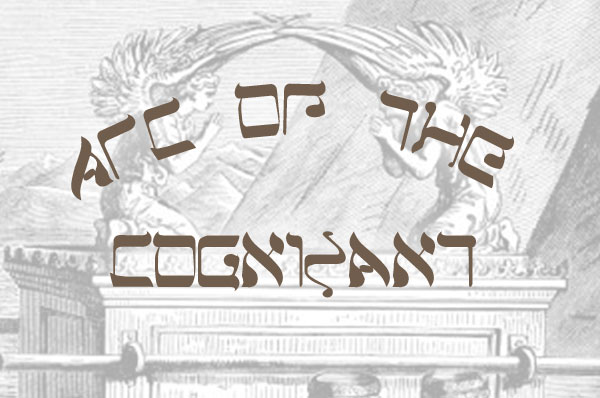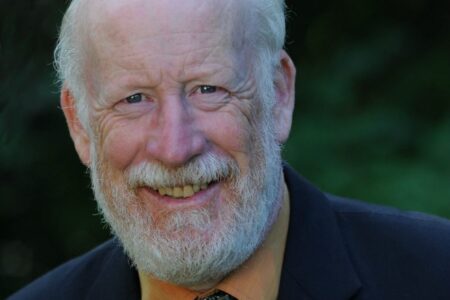Pondering Gods, Giants, Trees, Wars ...
I used to walk like a giant on the land.
Now I feel like a leaf floating in a stream. — Neil Young
Generals gathered in their masses, just like witches at black masses… In the fields the bodies burning, as the war machine keeps turning. – Black Sabbath
I believe in this life
But not the afterlife —
In a natural order,
In the tree of life.
— Brendan Perry
By Charles Jeanes
This column is going to be a loosely-associated piece whose coherence I cannot guarantee, readers… If you have some acquaintance with Jungian theory about a collective human unconscious revealed in the myths of many cultures, this may be suggestive of theme.
In the beginning: giants, war and a tree, in the mythos of three traditions
Teutonic mythos: There was an abyss of ice in the north and in the south a place of fire: Muspell-heim, where the demon Surt was armed with a sword of flame. Surt’s fires melted the ice, where a mist formed. Ymir the first frost giant (jotun or thurse) emerged from the primordial fog, and then a gigantic cow. Four rivers flowed from her four teats; Ymir was nourished in this way.
The gigantic cow licked the ice; Bors emerged, father of Odin and his two brothers. Odin (Anglo-Saxon Woden, hence Wednesday) fought and killed Ymir, and from the blood came the oceans, from his skull the heavens, from bones the mountains, and from hair the forests.
Odin and his family built Asgard for the Gods (the “Aes,” which gives us our word “ace”) and Midgarth (“middle earth”) for humans. The Aes and the Vanir fought a great war at the start of creation.
In Alfheim and Svart-alfheim lived light and dark elves. Other realms for giants (Jotun-heim), and the dead, (Hel) also were part of the Nine Worlds joined by the world tree, Yggdrasil.
Semitic mythos: Four rivers flowed from Eden in the Israelite myth of creation, and the “sons of god” mated with “daughters of men” and the progeny were giants or “Nephilim” like Goliath (see Genesis, ch. 6, v. 4). In The Revelation of John, last book of the Christian New Testament, the author relates a war in heaven between God and Lucifer when satan rebelled and was struck down to Hell. In the tale of Adam and Eve there are two significant trees at the center of Eden.
Teutonic: Loki, the trickster god — a half-Jotun — was chained by Odin as a punishment for evil deeds under the jaws of a serpent dripping venom on his face; Loki’s wife caught the venom with a basin, but periodically emptied it — when venom seared Loki and he caused titanic earthquakes by his thrashing in pain. At Ragnarok, the final war, gods and giants will fight a battle to the death. The same sort of end-of-time battle is prophesied in Revelation, between Christ and the anti-Christ, God and Satan. For Ragnarok, the god Heimdall blows his horn, for Armageddon, it is the archangel Gabriel.
Hellenic mythos: Chaos and Gaia gave birth to the giant Titans Chronos and Rhea, whose son Zeus led a war against the Titans. After his victory, monsters were bound by Zeus underground, and caused earthquakes. One Titan, Prometheus, gave humans fire from the sun because all other gifts of power had been given out already by his foolish brother. Zeus punished Prometheus with eternal torture for this act, having his liver repeatedly eaten by an eagle; his liver would regrow each night. The gods gave Pandora a box with all the vicissitudes of human life contained inside, warning her not to open it. She did, and out flew a thousand afflictions of the human condition; Pandora slammed the lid too late, but had held back just one being from escape: the spirit of hope. She released hope at the urging of Zeus.
The giants of our history, the wars of language, the trees of connection
I know of few cultures in the past that do not celebrate some heroic human figure as a “giant” among other men and women. It is common parlance to refer to individuals when praising their enormous contribution to the history of a people as “giants.” But beyond that prosaic usage, we do not usually speak as if Giants were ever real, as in the Jack and the Beanstalk fairy tale.
The imagery of war in our language is even more common than the metaphor of giantism. War on drugs, on poverty, on disease, etc. etc. are phrases so clichéd that we try to avoid them when writing quality journalistic sentences. War is real and universally reviled as a curse of humanity, but any real capacity to end it forever is not widely believed. [I urge readers to find James Hillman’s book, A Terrible Love of War, Sebastian Junger’s War, to delve deeply into the meanings of war.] War generates more misery than any other human-originated phenomenon.
Trees occur in our language most often as simple nouns but the metaphor of a tree which links members of one pedigree (“family tree”), or trees of related sciences (the “tree of knowledge”) or trees of community and connection, are fairly mundane and pedestrian images also.
Do the mythos of our cultures tell us something important?
This can only be a brief note on the subject of what “true” means, and why myths possess truth inside a fantastic outward appearance; read Carl Jung if you want the deep analysis.
The myth of a people to explain the origin of something like love does not have to possess literal, “scientific” truth. Myth is not factual. It is not a lie either. When Plato wrote his story of original Herm–Aphrodite beings who were so perfect that Zeus split them all in two, so jealous were the gods of these beings’ superiority – Plato did not mean to tell a truth about the past history of human beings. He did mean to give a spiritual and mystical hypothesis to explain the love of humans for one unique person in the most profound love, the “soul-mate.” Each of us, Plato wrote, is seeking the other half of our being, the one who would have been merged with us had Zeus not separated the hermaphrodites. We seek the one who makes us feel whole.
This is mythic truth on the subject of human love. Mythic truth makes immediate sense to us at a level deeper than cerebral mind and intellectual thinking. Our life experience tells us when we hear a mythic truth; our reason, logic and science simply are not relevant instruments for the comprehension of a mythic truth.
The mythic truth of war, giants, and a Tree
It is immensely curious to me that the three myth-cycles I cited above — Semitic, Hellenic, and Teutonic – accept war as a given of the cosmos. War just is. War is just there in the beginning of all things.
God casts satan down, Zeus thrashes the Titans, Odin and the Vanir go to war, and there is no other explanation than simple humanlike feelings of jealousy, rage, and revenge, in the motives of beings who are supposedly far above us. God is jealous and says so to Moses; Zeus and Odin, the supreme gods of their pantheons, do not accept rivals nor peers, and war is the result. I would have liked our ancestors who created these mythic tales to have delved deep and come up with a reason war afflicts us, a cause more cosmic than simple envy and anger. But the myths we have offer no such profundity.
The truth of giants is very similar to the truth of magical trees, in my opinion. We stand in awe of trees and giants. Trees are of course gigantic things themselves. In the gigantically-popular film, Avatar, there is a tree of unbelievable dimension killed by the war machinery of humans destroying a planet for the metal that enriches a corporation. It is a revelation of the depravity of the human race back on our home planet, as depicted in the film, that we would so destroy this being.
We have a reverence for giants and trees, as if size must naturally indicate great goodness and wisdom. Doris Lessing, in her fine novel Shikasta, hinted at a link of humans and giants in the past, and of course there are many who believe Earth was visited by E.T.s who manipulated humans. (see Zechariah Sitchin’s writings). We need to believe in great, good beings.
Giants, in our myths, possess bodies of vast physical size but are in all other ways very much like humans. Giants are big, but not quite alien or non-human. The giant in our folk tales and fairy stories is like the god in pagan myth, with the same emotions and motives as we, but with more power to do what they want to do than you or I generally possess in our mortal bodies.
Trees are nothing like us in their physical form, are very large, and possessed of a strange consciousness we cannot yet comprehend. The tree of life, the tree of knowledge of good and evil (like the two trees in J.R.R. Tolkien’s myth-cycle) and the world-tree Yggdrasil, are images of human fascination with the mystery that a tree presents to our minds.
War is something we can talk about, write about, think about, make art about, but not, ultimately, something we control. Endless words are generated by the topic. Our news media cannot stop reporting it. Our entertainments cannot stop bringing it to us in books, films, games, songs, poems, pictures and so on. A certain kind of people make careers, reputation, and wealth, from war; religions all have something to say about war in their scriptures and prayers. Academics analyse it in weighty tomes, and songwriters can inspire us with lyrics about it. Politicians and “leaders” condemn war when other people cause it, and praise it when they themselves choose to make it.
War is not a phenomenon we can say we understand completely and, understanding it, can declare we know the simple, straightforward way to avoid it forever; that is the entire point of the Hillman book I recommended above.
Conclusion
I promised no essential coherence in this column, and I have to own the fact I cannot draw the threads of my thoughts together here.
Beings with a consciousness much larger than ours, perhaps like the mystery of a tree’s mind, are what humanity needs to help us solve the atrocity of war. We cannot do it ourselves.
That is the best I can offer by way of knitting up my themes.


























